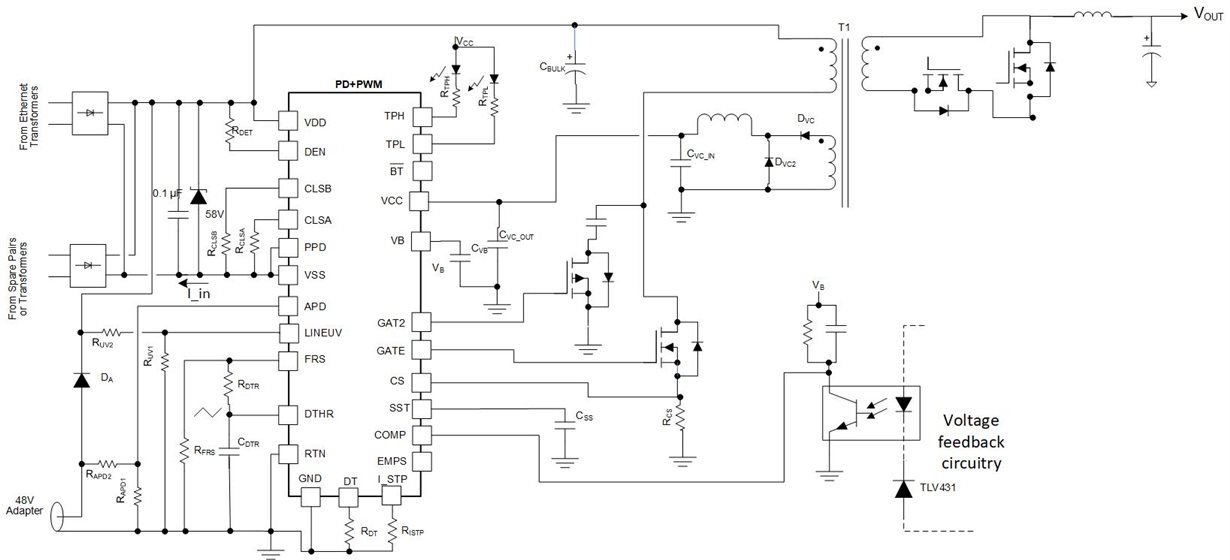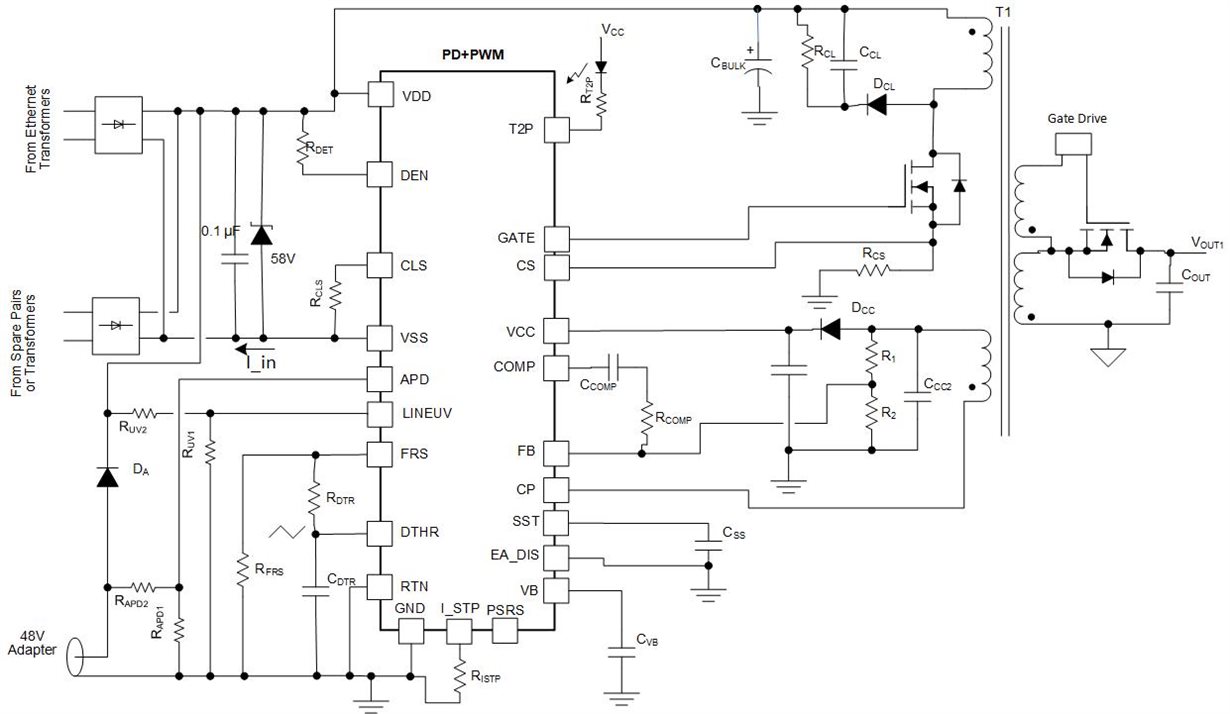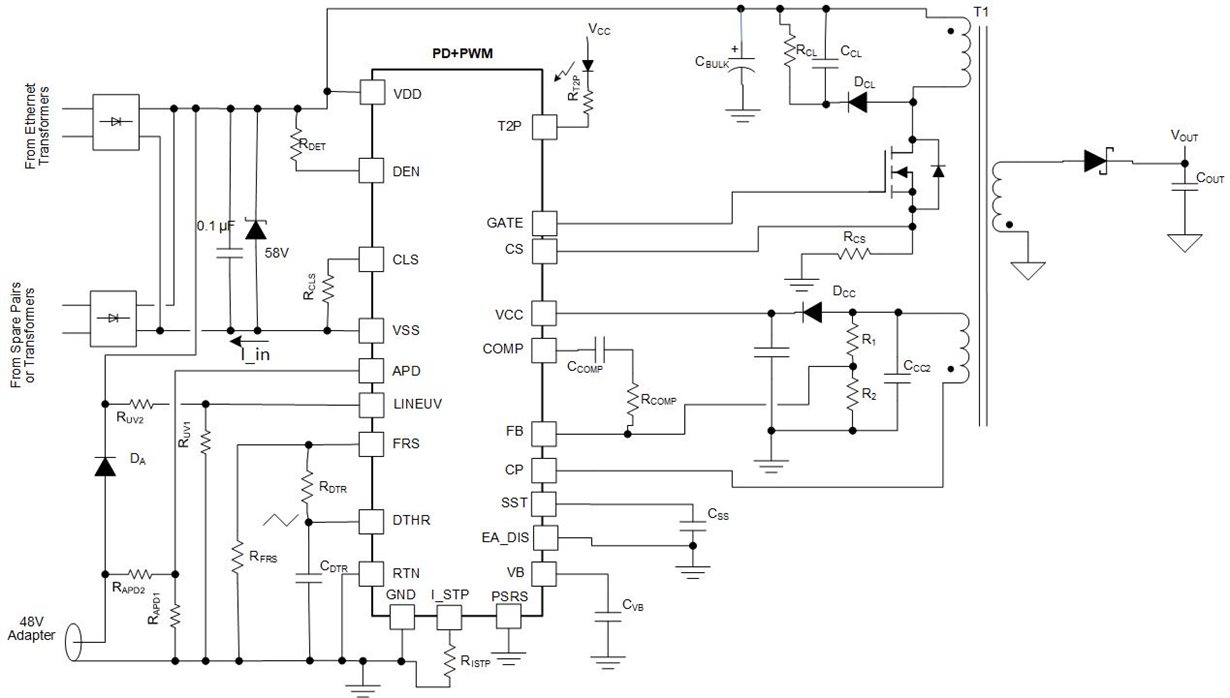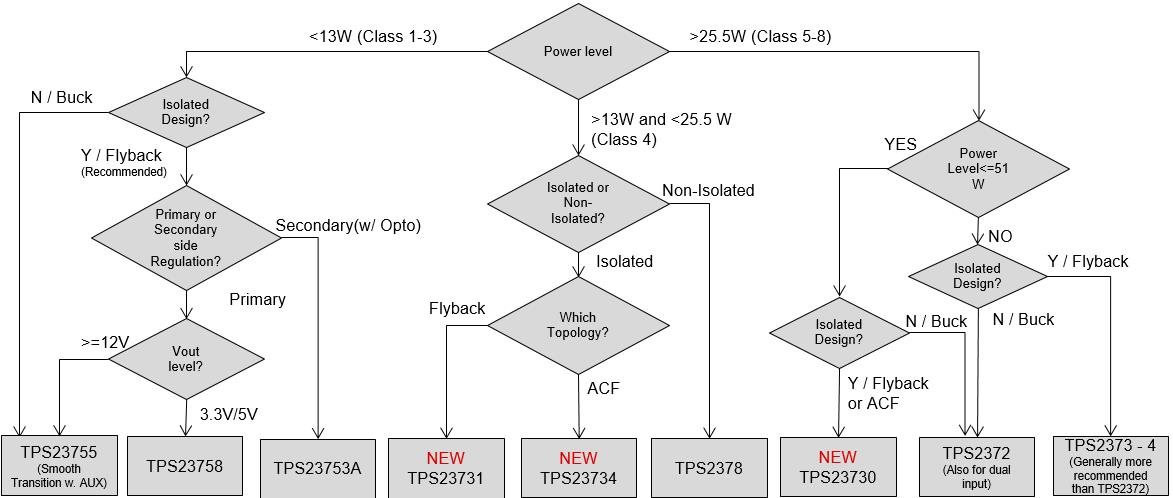SSZT216 December 2020 TPS23730

Designers have several topologies to choose from when designing 51-W isolated DC/DC power over Ethernet (PoE) systems. In a perfect world, each topology would cost nothing, have 100% efficiency and be smaller than a grain of sand. But since that isn’t possible, system designers are forced to choose the topology that closest meets their needs. In this article, I’ll discuss three of the most commonly used 51-W power topologies for isolated DC/DC PoE subsystems – active clamp forward (ACF), synchronous flyback and nonsynchronous flyback – and the trade-offs of each.
ACF topology
 Figure 1 ACF topology schematic
Figure 1 ACF topology schematicSynchronous flyback topology
 Figure 2 Synchronous flyback topology schematic with PSR
Figure 2 Synchronous flyback topology schematic with PSRNonsynchronous flyback topology
 Figure 3 Nonsynchronous flyback topology schematic with PSR
Figure 3 Nonsynchronous flyback topology schematic with PSRThe TPS23730 works in all three topologies. Given its system-level flexibility, the TPS23730 is recommended for any Type 3, <51-W isolated PoE design. When choosing a PoE PD for your next design, consider using TI’s PoE PD selection flowchart (Figure 4) as part of your decision-making process.
 Figure 4 TI’s PoE PD selection flowchart
Figure 4 TI’s PoE PD selection flowchartIsolated 51-W PoE designs have several common topologies. Each topology has its advantages and disadvantages, and the topology that you ultimately choose will depend on your individual priorities.
Additional resources
- Check out these technical articles:
- Watch the training video, “Understanding Advanced Startup in TI's Power over Ethernet Powered Devices (PoE PD).”